Price:₹9,000.00
Kuari Pass Trek is packed with a variety of adventurous experiences, making it perfect for thrill-seekers in uttarakhand Himalaya-2025
The Kuari Pass is the gateway to one of the most dreamlike trek destinations of the Himalayas. It is situated in the Chamoli District of Uttarakhand’s Garhwal Himalayas and connects South Tibbit to the Nanda Devi Biosphere Reserve. Lord Curzon first explored this iconic Himalayan trek during the British era; thus, it got another popular name, the Curzon trail.
If you have ever dreamed of standing on the edge of the mountain (12,516 ft) and witnessing the panoramic views of snowy peaks, then the Kuari Pass is the perfect trek. What makes the Kuari Pass trek everyone’s favorite is its balance of moderate difficulty with world-class scenery, which attracts both beginners and seasoned trekkers. The panoramic views of several prominent peaks like Nanda Devi, Trishul, Dronagiri, Kamet, and Chaukhamba makes it one of the best winter treks of Uttarakhand Himalayas.
The accrual Kuari Pass begins from the Tugasi village. The trail winds through ancient oak and rhododendron forests, across wide high-altitude meadows (bugyals), and up to a panoramic summit where the giants of the Indian Himalayas stretch across the horizon.
But this trek isn’t just about reaching a summit. It’s about the quiet moments between the whispering forests, the starlit campsites, and the warmth of remote Himalayan villages. You’ll experience local culture, taste traditional food, and feel the pulse of Garhwali heritage that still thrives in these remote valleys.
Whether you choose to trek in the snow-covered silence of winter or the lush vibrancy of summer, Kuari Pass offers a unique experience each season. From frozen streams and powdery trails to blooming meadows and sweeping valley views, it’s a visual and emotional journey that stays with you long after your return.
Short Itinerary of Kuari pass Trek
Day 1: Drive from Dehradun via Rishikesh to Joshimath Market Base Camp
Altitude Gain: 2,089 ft to 8,530 ft | Drive Distance: 280 km | Drive Duration: 9 to 10 hours | Overnight Stay: Joshimath Hotel Dhaneesh (Twin Sharing) | Pick-up point for Himalayan Hikers trekkers: Prince Chowk, nearby Dehradun Railway Station | Route: Dehradun → Rishikesh → Devprayag → Srinagar (Garhwal) → Rudraprayag → Karnaprayag → Nandaprayag → Joshimath
Highlights
Begin your journey from Dehradun or Rishikesh with a scenic drive to Joshimath, the base camp for the Kuari Pass trek. En route, witness the sacred river confluences at Devprayag, Rudraprayag, Karnaprayag, and Vishnuprayag, each offering stunning views and cultural significance.
Day 2: Drive from Joshimath to Tugasi Village by Taxi, same day Trek to Gulling Campsite
Altitude Gain: 7,545 ft to 8,530 ft to 9,264 ft | Trek Distance: 3 km | Trek Duration: 3 to 4 hours | Trek Difficulty: Easy to Moderate | Overnight Stay: Gulling Campsite (Twin Sharing)
Highlights
Drive from Joshimath to Tugasi (15 km), then begin your 4 to 5 hour trek to Gulling camp. The trail offers scenic views of valleys, forests, and snow-capped peaks. Enjoy the stunning Himalayan panorama at Gulling and camp overnight amidst tranquil surroundings.
Day 3: Trek from Gulling Camp to Khullara Campsite
Altitude Gain: 9,264 ft to 11,014 ft | Trek Distance: 5.5 km | Trek Duration: 8 to 9 hours | Trek Difficulty: Easy to Moderate | Overnight Stay: Khullara Campsite (Twin Sharing)
Highlights
Begin your day with a stunning sunrise over the Chaukhamba peaks. After breakfast, trek from Gulling to Khullara, gradually ascending through oak and rhododendron forests. The 3 to 4 hour trek offers clear views of Nanda Devi and Dronagiri, making Khullara a scenic and serene campsite for the night.
Day 4: Trek from Khullara to Kuari Pass Summit and descend back to Khullara Campsite
Altitude Gain & Loss: 11,014 ft to 12,516 ft to 11,014 ft | Trek Distance: 8 km | Trek Duration: 8 to 9 hours | Trek Difficulty: Moderate | Overnight Stay: Khullara Campsite (Twin Sharing)
Highlights
Begin early from Khullara for the steep ascent to Kuari Pass (4,264 m), where breathtaking views of Nanda Devi, Dronagiri, Kamet, and Chaukhamba await. After soaking in the summit views, descend through alpine meadows to Khullara viewpoint for an evening of rest amid majestic Himalayan vistas.
Day 5: Trek from Khullara to Tugasi Village Road head and Same day Drive to Joshimath
Altitude Loss: 11,014 ft to 8,530 ft to 7,545 ft | Trek Distance: 8.5 km | Trek Duration: 6 to 7 hours | Drive Distance: 15 km | Drive Duration: 30 minutes to 1 hour | Overnight Stay : Hotel stay in Joshimath-(Twin/Triple sharing)
Highlights
Descend from Khullara to Tugasi Village, a 8.5 km trek taking 4–5 hours through forests and terraced slopes. From Tugasi, drive back to Joshimath, enjoying scenic mountain views and valley landscapes along the way. Reflect on your trek as you return to base.
Day 6: Depart from Joshimath to Dehradun via Rishikesh
Altitude Loss: 8,530 ft to 2,089 ft | Drive Distance: 280 km | Drive Duration: 9 to 10 hours | Drop-off point for Himalayan Hikers trekkers: Prince Chowk, nearby Dehradun Railway Station | Route: Joshimath → Nandaprayag → Karnaprayag → Rudraprayag → Srinagar (Garhwal) → Devprayag → Rishikesh → Dehradun
Highlights
After your final breakfast with the team, begin the 8 to 9 hours scenic drive from Joshimath to Dehradun or Rishikesh. Enjoy views of river confluences, mountain towns, and lush valleys along the way. Arrive by evening, completing your unforgettable Kuari Pass adventure.
Why You Should Do Kuari Pass Trek?
The Kuari Pass trek is a popular trek in the Indian state of Uttarakhand, known for its breathtaking views of the snow-capped Himalayan peaks. There are several reasons why people choose to do this trek:
Scenic Beauty: The Kuari Pass trek offers stunning vistas of some of the highest peaks in the world, including Nanda Devi, Kamet, and Trishul. The trail takes you through lush green meadows, dense forests, charming villages, and alpine landscapes, providing a visual treat for nature lovers and photographers.
Adventure and Challenge: The trek presents a moderate level of difficulty, making it suitable for both experienced trekkers and beginners. It involves ascending to an altitude of around 4,264 meters (13,990 feet) at Kuari Pass, which adds a sense of adventure and achievement. The trail includes steep climbs, narrow ridges, and sometimes even snow, providing a thrilling experience for adventure enthusiasts.
Cultural Immersion: The region is inhabited by local communities like the Garhwali and Tibetan people, giving trekkers an opportunity to interact with and learn about their rich culture and traditions. You can visit small mountain villages, interact with the locals, and get a glimpse of their lifestyle, architecture, and cuisine.
Flora and Fauna: The Kuari Pass trek takes you through diverse ecosystems, including oak and rhododendron forests, which are home to a wide variety of flora and fauna. You may come across different bird species, Himalayan wildlife like musk deer, and if you’re lucky, you might spot the elusive snow leopard.
Solitude and Serenity: While the Kuari Pass trek is gaining popularity, it still offers a sense of solitude and tranquility compared to more crowded treks in the region. The pristine surroundings, untouched landscapes, and peaceful atmosphere make it an ideal choice for those seeking a break from the chaos of daily life.
Trekking Infrastructure: The trek is well-established with designated campsites, trekking routes, and experienced local guides and porters available. This infrastructure ensures a relatively comfortable and safe trekking experience, especially for those who are new to trekking or prefer some level of support.
Picturesque Campsites: The campsites along the trek are incredibly scenic, offering clear skies, starlit nights, and open meadows surrounded by forests. Places like Gulling and Khullara are popular spots for camping.
Forest Trails:The trail takes you through dense oak and rhododendron forests, adding to the scenic beauty. The forested sections are rich in biodiversity, and during spring, the rhododendrons bloom in vibrant red and pink.
Meadows and Bugyals: The trek involves walking through vast meadows or bugyals that open up into incredible mountain views. The lush greenery in summer and the snow-clad landscapes in winter create a picture-perfect contrast.
Relatively Easy Trek: Kuari Pass is a moderately easy trek, making it accessible to beginners. Despite its ease, the trek offers majestic views and a sense of accomplishment when reaching the pass.
Winter Wonderland (if done in winter): In the winter months (December to February), Kuari Pass becomes a winter trek. The snow-covered landscapes, frozen streams, and a completely white panorama offer a different charm. The trek is popular for snow trekking during this time.
Famous Lord Curzon Trail: The trek is also known as the Lord Curzon Trail, named after Lord Curzon, a British Viceroy of India, who is said to have trekked here. The trail has historic significance and has been popular for over a century.
Snow Trekking (in Winter): If you undertake the trek in winter, you’ll be trekking through thick snow, adding a whole new level of adventure. Trekking through snow-covered trails, and ascending the pass in wintry conditions can be physically demanding but equally thrilling.
Navigating Forest Trails: The dense oak and rhododendron forests along the route provide a sense of adventure as you navigate through narrow, winding trails. The forests are filled with wildlife, and you may spot rare species of birds or even wildlife like Himalayan black bears or mountain deer.
Crossing High-altitude Meadows (Bugyals):Walking through expansive high-altitude meadows like Gorson Bugyal is both peaceful and adventurous. The openness of these meadows, with views stretching to the horizon, provides a sense of wilderness and remoteness
Overwhelming sight of the Himalayas in Kuari Pass Trek
Get exotic mountain views from the very first day of the trek. Go higher and get welcomed by the great view of gigantic peaks which will accompany you all along the way.
Kuari pass top is known for the clear and overwhelming sight of the Himalayas because close and imposing views are the real attraction of this trek.
Therefore, the peaks visible from the summit are – Trishul, Chaukhamba, and Kamet, Nanda Devi peaks, Nanda Ghunti, Neelkanth, Dronagiri, Changbang, Mana, Mukut Parbat, Rishi pahad and others.
During the trek, pass through remote villages of the Himalayas and dense forests. Mainly of Oaks and Deodar. Moreover, spot Himalayan animals and rare species of birds on the way. And, in this region the Rhododendron (Burans) trees with beautiful crimson flowers are found in abundance.
In addition to the beauty of Kuari Pass trek, the meadows present here are lavish and walking on their velvety grass is a great pleasure!
Further, traverse Vinayak Pass and head to Kuari Top, it is the highest point of this trek. From here, Nanda Devi Massif looks beautiful among all other peaks and becomes the highlight.
Here are some of the notable peaks that are visible from the Kuari Pass summit:
Nanda Devi: Nanda Devi is the highest peak entirely within India, standing at an elevation of 7,816 meters (25,643 feet). It is one of the most prominent and revered peaks in the region.
Kamet: Kamet is the second highest peak in the Garhwal region, with an elevation of 7,756 meters (25,446 feet). It is known for its pyramid-like shape and challenging climbing routes.
Dronagiri: Dronagiri is a group of peaks, with the highest point reaching 7,066 meters (23,182 feet). It is notable for its picturesque beauty and mythological significance.
Chaukhamba: Chaukhamba is a group of four peaks, with the highest peak reaching an elevation of 7,138 meters (23,419 feet). The name Chaukhamba translates to “four pillars” and represents the four celestial deities.
Hathi Parvat: Hathi Parvat, meaning “Elephant Peak,” is a prominent mountain in the region, resembling the shape of an elephant. It stands at an elevation of 6,727 meters (22,073 feet).
Ghori Parbat: Ghori Parbat is another significant peak visible from the Kuari Pass summit, reaching an elevation of 6,708 meters (22,008 feet).
Here are some brief details about the Trek
- Before heading towards the itinerary, it is really essential to perceive the reason behind choosing Kuari Pass trek.
- See firstly, the trekking distance is a total of by taxi 588 Kms and on foot 33 km which is to be covered in 6 days.
- Kuari pass is the best winter trek of Uttarakhand Himalayas, this is the best trek for families, Students, and Beginners Altitude is 12516 feet
- Need proper gear & clothing for sub-zero temperature winter?
- You got to see so many heavenly bodies in one place like the panoramic view of the Himalayan ranges, meadows, one of the beautiful Trishul, Chaukhamba, and Kamet, Nanda Devi peaks, Nanda Ghunti, Neelkanth, Dronagiri, Changbang, Mana, Mukut Parbat, Rishi pahad and others. , pine forests, and different variety of flora and fauna surpassing through bona fide Garhwali heritage and culture.
- Do spare time in Interaction with locals, and you will get to know about some of the ancient tales of Indian mythology. And our Garhwali Culture
- And, in winter / summer, the Kuari pass trek turns totally different and amusing because of meadows, wildflowers and woods blooming in different colors.
- Beautiful landscapes so carry proper photo gear & Extra battery backup.
- The backpack should not exceed 10 to 12 kg only
Here is some important information you should know before planning your trip:
Trek Duration: The Kuari Pass trek is typically a 6 days trek, covering a total distance of around 25 km.
Trek Difficulty: The trek is considered to be of moderate level and can be done by beginners as well as experienced trekkers.
Best Time to Visit: The best time to do the Kuari Pass trek is between April to June and September to November. or Winter December to April end
Starting Point: The trek usually starts from a small village called Tugasi in Uttarakhand.
Altitude: The highest point of the trek is the Kuari Pass which is situated at an altitude of 12,516 ft (3,815 m).
Weather Conditions: The weather conditions on the trek can be unpredictable and can change rapidly. It is important to be prepared for rain, snow and cold weather conditions.
Permits: A permit is required to do the trek, which can be obtained from the forest department office in Joshimath.
Accommodation: There are several options for accommodation on the trek, including tents, guesthouses and lodges.
Fitness Requirements: The trek requires a moderate level of fitness, and it is recommended to do some physical training before embarking on the trek.
Equipment: It is important to carry appropriate trekking equipment such as trekking shoes, warm clothes, rain gear, sleeping bags and a backpack.
About Base Camp Joshimath in Kuari Pass Trek
It is a picturesque town in Chamoli at an altitude of 1875 m nestled amid high Himalayan peaks. It is the base camp of many Himalayan treks and the gateway to famous pilgrim sites like Badrinath.
There is spirituality in the air because of the presence of ancient temples. It is home to one of the four “Math” “Atharva Veda” by Adi Shankar Acharya. Joshimath has a tranquil charm away from the cacophony of cities.
The gushing rivers and silent streams with the cover of verdant green and the pious ancient temples in the area will surely lure you to come here again and again.
Important Tips and Preparation Guide for the Kuari Pass Trek
Physical Fitness: The Kuari Pass trek involves moderate-level difficulty, including steep ascents and descents. It is advisable to engage in regular physical exercise and cardio workouts to build stamina and endurance before the trek. Additionally, consult with a healthcare professional to ensure you are physically fit for the trek.
Acclimatization: As the trek involves gaining significant altitude, it’s essential to acclimatize properly to avoid altitude sickness. Plan your itinerary in a way that allows for gradual ascent and includes rest days at higher altitudes. Stay hydrated, maintain a slow and steady pace, and be aware of any symptoms of altitude sickness, such as headache, nausea, or dizziness.
Trekking Gear: Invest in appropriate trekking gear to ensure your comfort and safety on the trail. Essential items include sturdy trekking boots, moisture-wicking clothing, a warm and waterproof jacket, thermal layers, a sun hat, sunglasses, gloves, and a good quality backpack. Don’t forget to pack essentials like a first aid kit, sunscreen, insect repellent, and a headlamp.
Weather Conditions: Be prepared for changing weather conditions in the mountains. Pack clothing that caters to both warm and cold temperatures, as the weather can vary throughout the day. Check the weather forecast before the trek and plan accordingly.
Permits and Regulations: Obtain the necessary permits from the forest department or local authorities before starting the trek. Familiarize yourself with the rules and regulations of the trekking area, and follow the guidelines to ensure minimal impact on the environment. Respect the local culture and customs during your interactions with the communities along the trail.
Hydration and Food: Carry an adequate supply of water and stay hydrated throughout the trek. There are several water sources along the trail, but it is advisable to treat or purify the water before consumption. Carry high-energy snacks and packed meals to keep yourself fueled during the trek.
Trekking Support: Consider hiring a local guide or trekking agency that has experience in organizing the Kuari Pass trek. They can provide valuable assistance, local knowledge, and ensure your safety throughout the journey. If you are trekking independently, inform someone about your itinerary and keep them updated on your progress.
Leave No Trace: Practice responsible trekking by following the principles of “Leave No Trace.” Respect the environment by not littering and disposing of waste properly. Minimize your impact on the surroundings and leave the trail as you found it.
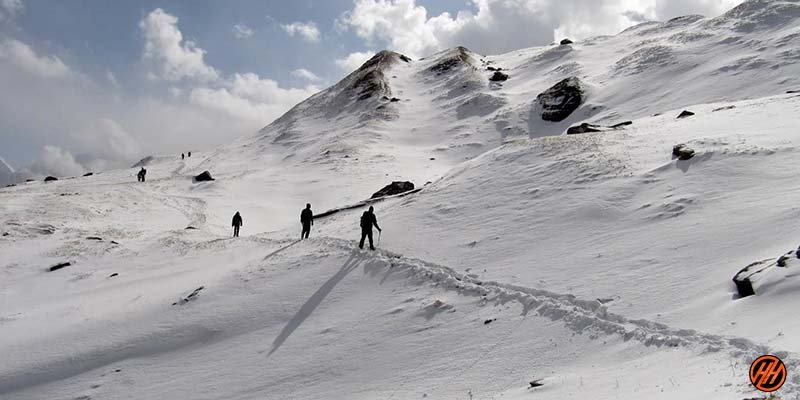
How difficult is kuari pass Trek
Kuari Pass Trek is a very beautiful winter or summer trek and an uphill trek in the Uttarakhand Himalayas, The Kuari pass Trek is great for those people who have a great passion for mountaineering and consider it a special purpose in their life. Despite the fact that the top is relatively low in elevation, we recommend physical endurance and a strong fitness record.
You have to travel 544 kms from Dehradun to Joshimath and return Joshimath to Dehradun by taxi and 33 kms on foot from Tugasi Village to kuari pass summit 12516 Feet and back to Joshimath.
These treks are not very difficult but you can, we are doing it for the last 30 years, some people come from all over the world who have their own fitness level and all people easily do trek to Kuari pass.
Don’t think much, dedicate yourself to nature, it will be easy for you, and always take the help of your trek leader, wake up in the morning during the trek, do some yoga and pranayam per day morning.
How safe is the Kuari Pass trek for first-time trekkers?
Yes the Kuari pass trek is very safe. All our professional strive our best to provide trekkers with the best experience possible. Kuari Pass Trek is a moderate trek that starts from Tugasi Village. These treks are uphill, You can do this trek comfortably, it is a good way to go through beautiful forests, which makes your trek easy.
Whenever you go for a trek, do it with full enthusiasm, do not think much, you keep adding yourself day by day with Himalayas, then everything will be easy for you. all trek route more beautiful
During the day the temperature of Kuari pass is around Winter temperature is -3°C to -5 °C and during the night the temperature comes down to -5 °C to -15 °C which is not bad.
Summer may ot june months temperature is 8 °C to 15 °C and during the night the temperature comes down to 5 °C to 12°C which is not bad. this is very good for summer trek kuari pass.
What do we do for safety in Kuari Pass trek?
First of all, the safety of trekkers is much more for us, if you see at the trek, then there are all the risks, which I do not think about.
Himalayan Hikers worry more about you than no one should ever have any problem on the trek.
What should we and you keep more safety in the trek
- Whenever you are going for any trek, it is very important that you go completely fit and ready.
- The trek is not difficult, if you make your feet and your mind calm and strong, you will find the trek very easy.
- While trekking, keep in mind that you are walking on the right route or not always with your guide.
- Most people look somewhere and where they are walking, this can cause twitching in your legs, which can ruin your entire trek.
- It is important to ask your doctor if you have any medical problems
- I should always keep my medical kit with me, it is very important.
- Himalayan Hikers always keep a medical kit with them, such as oxygen cylinders, and medicine to be given in an emergency on the trek
- If any trekkers have any more problems, then they are brought back to the base camp by laying them on the stretcher.
- Our camp in Kuari Pass trek is around the tree line where you can not have any problem with oxygen
- In case of any medical problem, the help of your guide or well-informed trekkers should be take
When does snowfall start in Kuari Pass trek?
In the Kuari pass trek, especially snowfall time occurs only in December, but sometimes it happens in early November as well, it is seasonal.
By the way, if it rains sometimes even in October, then the Kuari pass trek Summit becomes snowfall, but I do not know much longer.
The snow that falls from 15th December lasts for a long time.
Kuari pass trek has the highest snowfall in the months of January and February, which lasts till the last of May, and does not melt easily.
Winter Season
- In Kuari pass winter trek , you will need warm clothes a lot, for which you will need proper good uniform clothes
- Winters are always cold, so only warm clothes can keep you safe on trek
- Always take the information from the company with which you are booking the trek before going on the trek, what do we need to bring
- In the winter season, the temperature always drops day by day , so warm clothes will help you a lot.
- The minimum snowfall in Kunari Pass trek is 2 feet and more than 5 feet.
Summer Season
- Summer trek to Kuari pass trek is very special, the view and the temperature are all favorable to you
- For summer trek, you have to bring only normal clothes, so that your trek can be good, there is no need for hot clothes, but in hiking it is also necessary to bring all the equipment which is necessary for you.
- It is necessary to have 3 pairs of clothes from trekking, especially the poncho, you will have to bring every season
- In the summer season, the temperature is always normal, so there is no need for hot clothes.
Monsoon Season
- During the monsoon season, it rains occasionally during the Kuari pass trek especially in the Uttarakhand Himalayas , so if you have dry clothes here, it is very good, even when wet, it dries quickly.
- At this time you have to bring at least 3 pairs of clothes, for monsoon trek you do not have to bring too warm clothes, at this time you, hiking pants and t-Sart, I can trek
- It’s only a little cold in the morning and evening and the day is a good temperature for you
- Before going on any trek, it will be easy for you to take information related to each season.
- Trekkers need to know about these, you can ask us anytime like, Kuari pass trek route, trek map, temperature, weather conditions, difficulty level, trek starting point, end point, transport, view of the trek, best time to visit, How to reach Kuari pass trek distance etc, Trek Location, keep this information before going
- You also find some types of flowers in the Kuari pass trek which are very beautiful, these treks are very safe trek for monsoon.
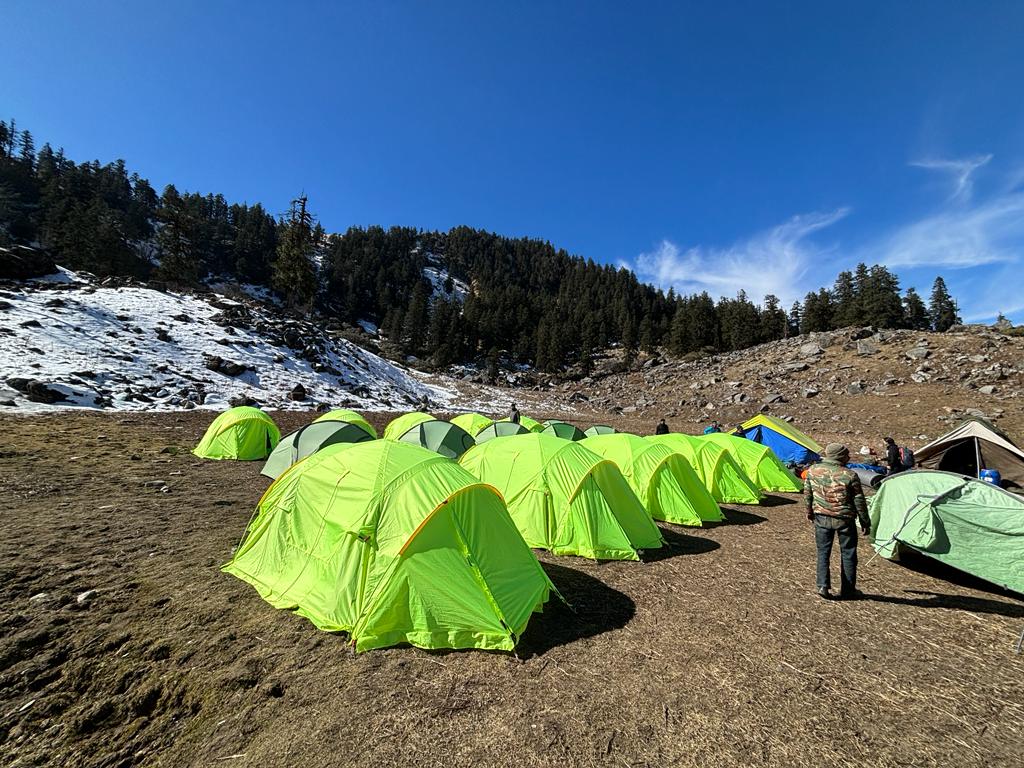
Your Travel Plan for the Kuari Pass Trek
- You can book trains, air flights, and bus tickets for your journey only according to the information given by us.
- The Kuari pass trek will be of 4 days and 02 days of your journey total of 06 Days from Dehradun to Rishikesh or Dehradun to Dehradun
- First of all, all the trekkers will have to book their flight and train bus according to our timetable as our pick-up is from 6 am to 7 am, and you will have to reach Dehradun in the morning.
- A taxi from Himalayan hikers will link you to the Dehradun railway station.
- In the Dehradun railway station, you will get our staff that will arrange transport for you. The contacts no Transport coordinator or our office team will give you a week ago to your departure
- Please you guys book your transport facility according to your own timetable, after Himalayan Hikers take all the responsibility of Dehradun to Dehradun, you will not face any problems.
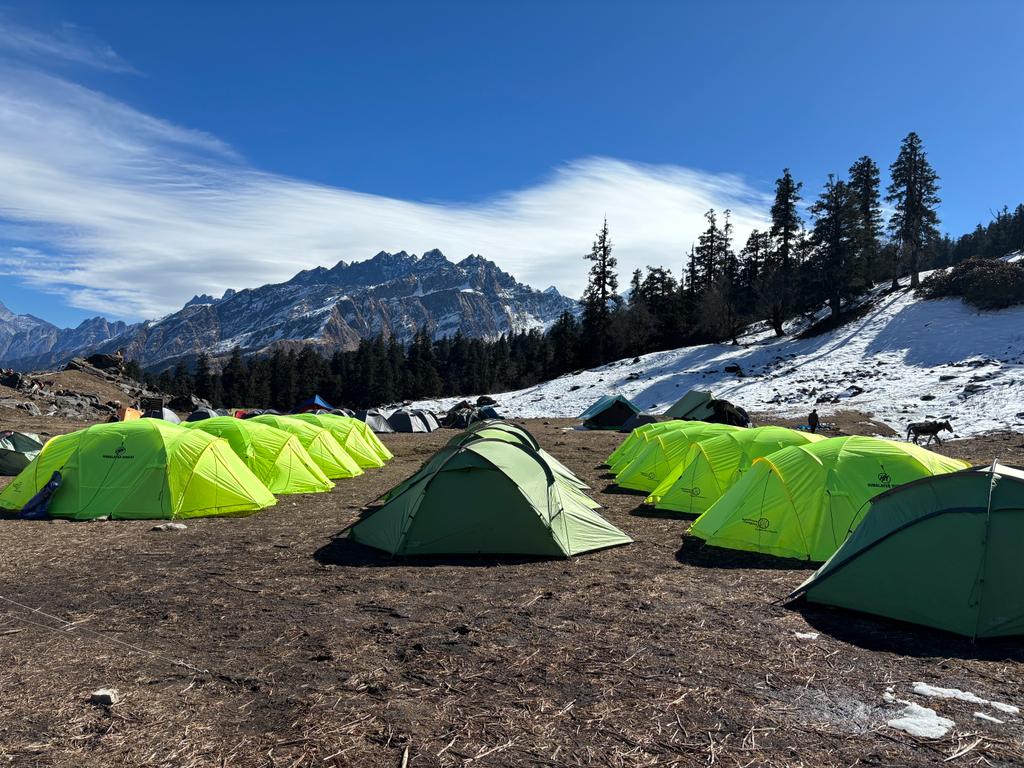
Trekking Fitness Training – Best Workouts for Strength & Stamina
Trek Fitness Chart
Before embarking on a trek, trekkers need to prepare their bodies physically. Trekking can be demanding, and it requires a certain level of physical fitness to avoid injury and fully enjoy the experience. Here are some important fitness considerations for trekkers:
Target: 4.5 km in 45 Minutes (Easy to Moderate Level Trek)
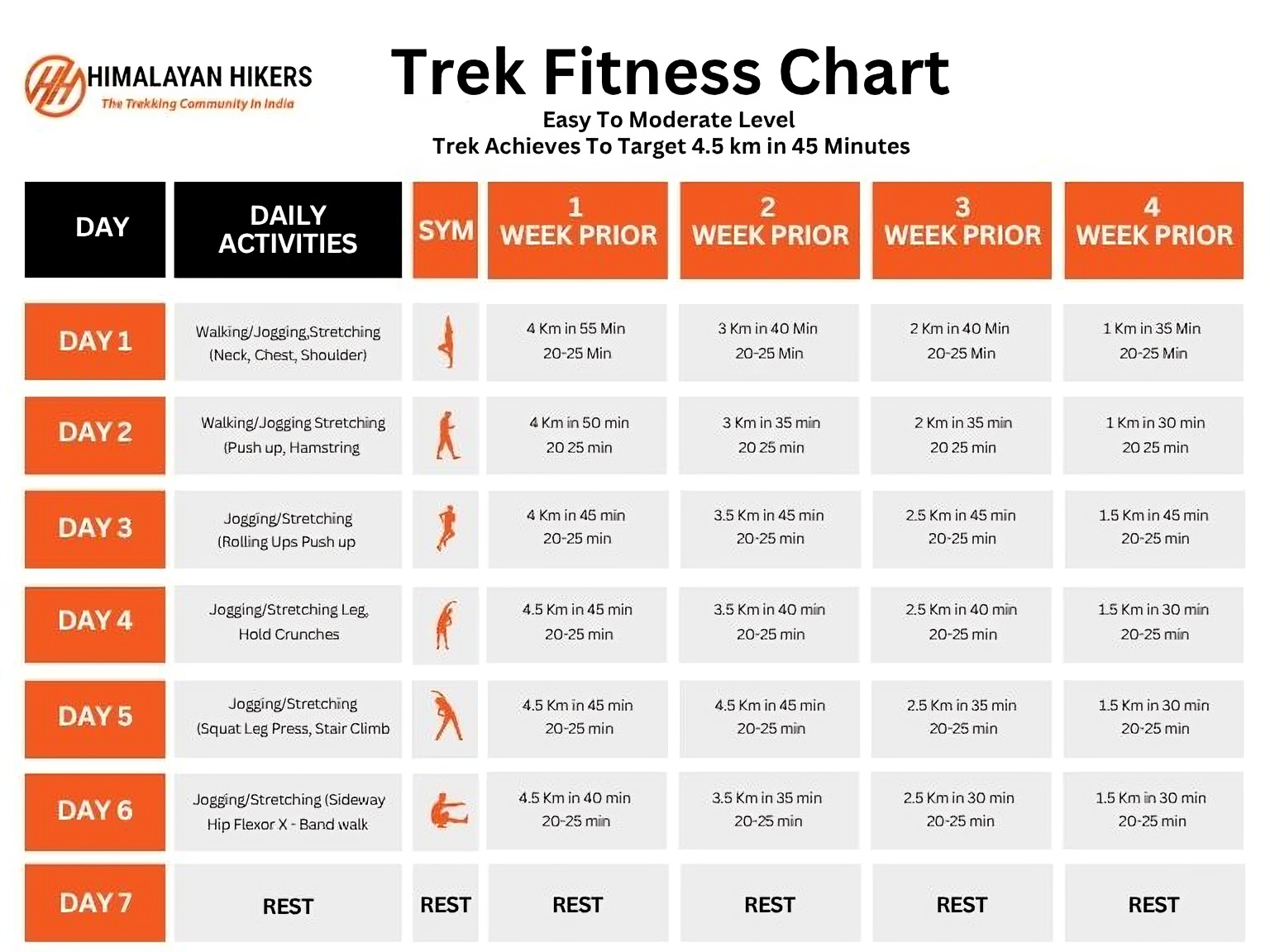 Now Begins Your Trekking Journey!
Now Begins Your Trekking Journey!
Cardiovascular endurance: Trekking involves walking long distances and often at high altitudes, which can be challenging for the cardiovascular system. Cardiovascular exercises such as running, cycling, or swimming can help improve endurance.
Strength training: Trekking requires strength in the legs, core, and upper body. Strength training exercises such as squats, lunges, planks, and push-ups can help build the necessary strength.
Flexibility and balance: Trekking involves navigating uneven terrain and often requires the body to move in different directions. Stretching exercises and activities that improve balance such as yoga or Pilates can be helpful.
Altitude acclimatization: If you’re planning a high-altitude trek, it’s important to acclimatize properly. This means gradually increasing your altitude over a period of days to allow your body to adjust to the lower oxygen levels.
Mental preparation: Trekking can be mentally challenging, so it’s important to prepare yourself mentally as well. Practicing mindfulness, meditation, or other stress-reducing techniques can be helpful.
It’s important to remember that everyone’s fitness level and needs are different, so it’s a good idea to consult with a doctor or fitness professional before starting any new exercise program.
How to reach Kuari Pass Trek?
To reach Rishikesh, the starting point for the Kuari Pass trek, you have several transportation options depending on your location. Here are some common ways to reach Rishikesh:
By Air: The nearest airport to Rishikesh is Jolly Grant Airport in Dehradun, which is approximately 21 kilometers away. From the airport, you can hire a taxi or take a pre-booked private transfer to reach Rishikesh. Several domestic airlines operate regular flights to Dehradun from major cities in India.
By Train: Rishikesh has its own railway station called “Rishikesh Railway Station” (IR station code: RKSH). It is well-connected to various major cities in India. From the railway station, you can hire a taxi or an auto-rickshaw to reach your desired location in Rishikesh.
By Road: Rishikesh is well-connected by road and can be reached by bus or taxi from nearby cities. Regular bus services operate from Delhi, Dehradun, and other major towns in Uttarakhand to Rishikesh. If you prefer a more comfortable and private journey, you can hire a taxi or take a self-drive car to reach Rishikesh.
Once you reach Rishikesh, you can make further travel arrangements to reach the specific starting point of the Kuari Pass trek, which is usually Joshimath. You can hire a taxi or take a shared cab from Rishikesh to Joshimath, which is approximately a 9 to 10-hour drive. Joshimath serves as a base camp for the trek, and from there, the trekking route to Kuari Pass begins.
It’s advisable to plan your travel in advance, especially during the peak trekking season, and consider the weather conditions and road conditions while making your travel arrangements.

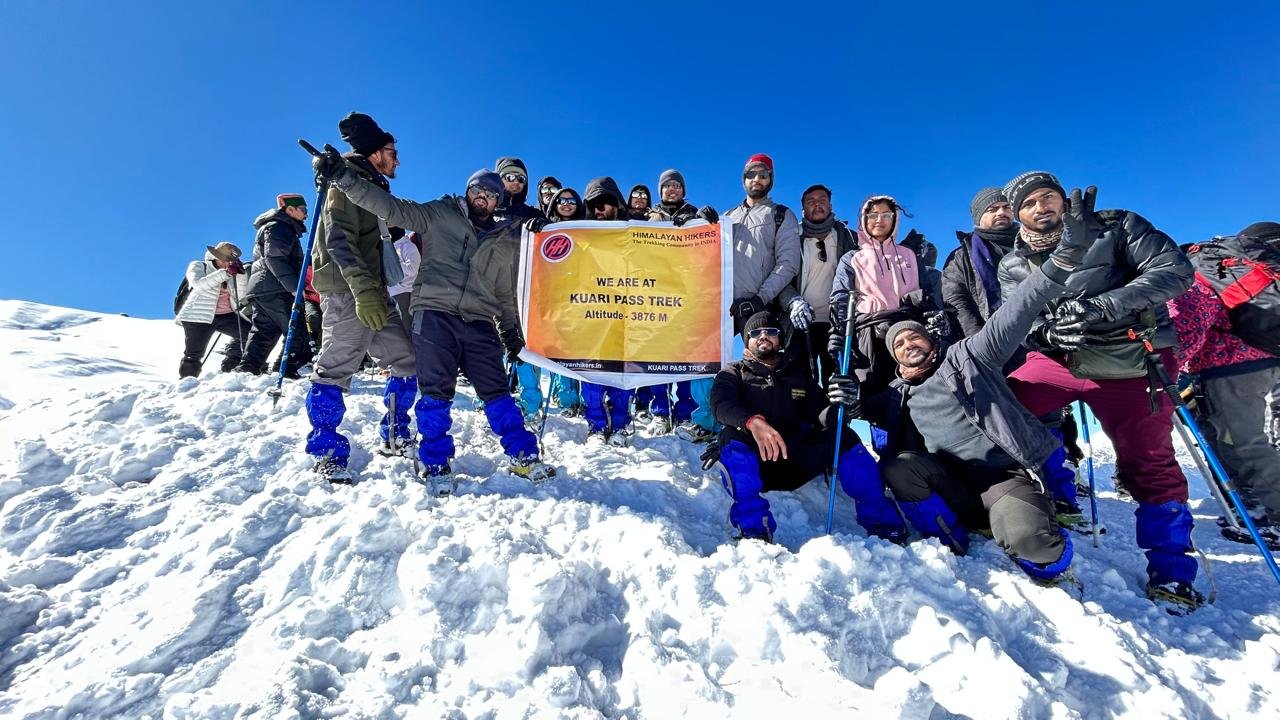
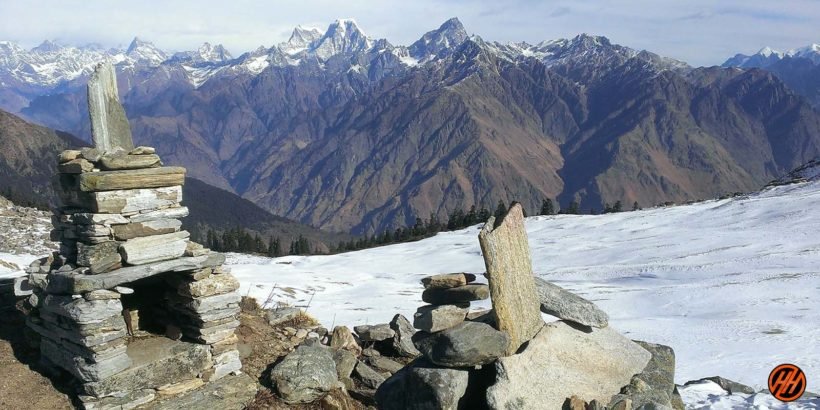
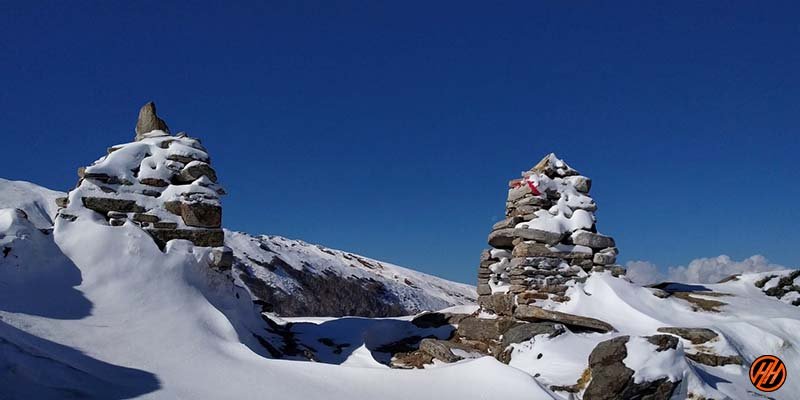
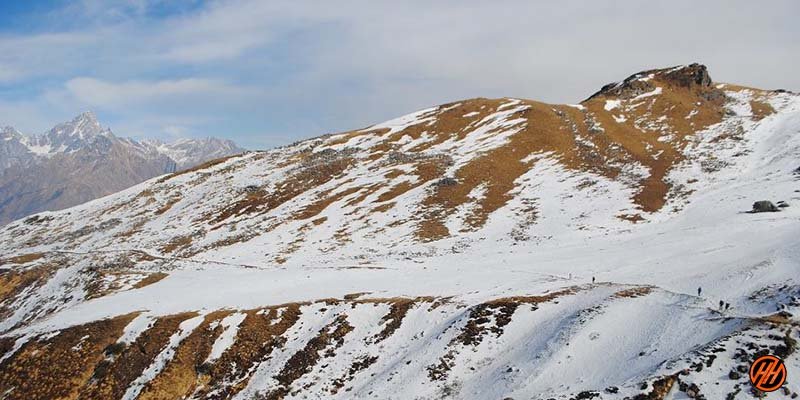
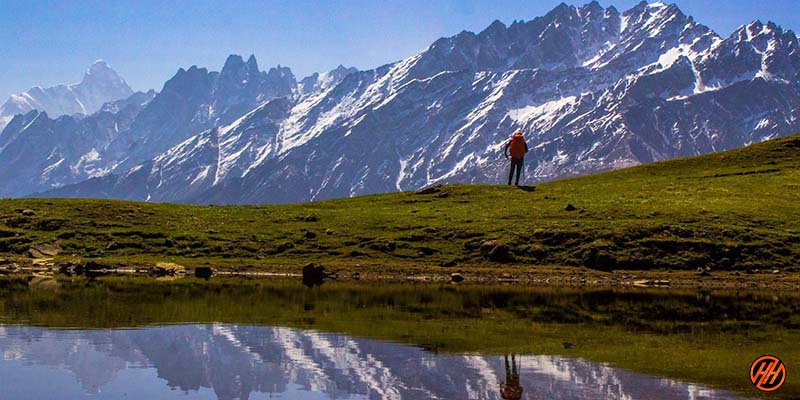
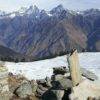
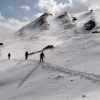
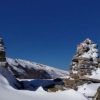
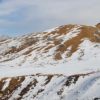
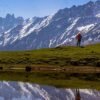
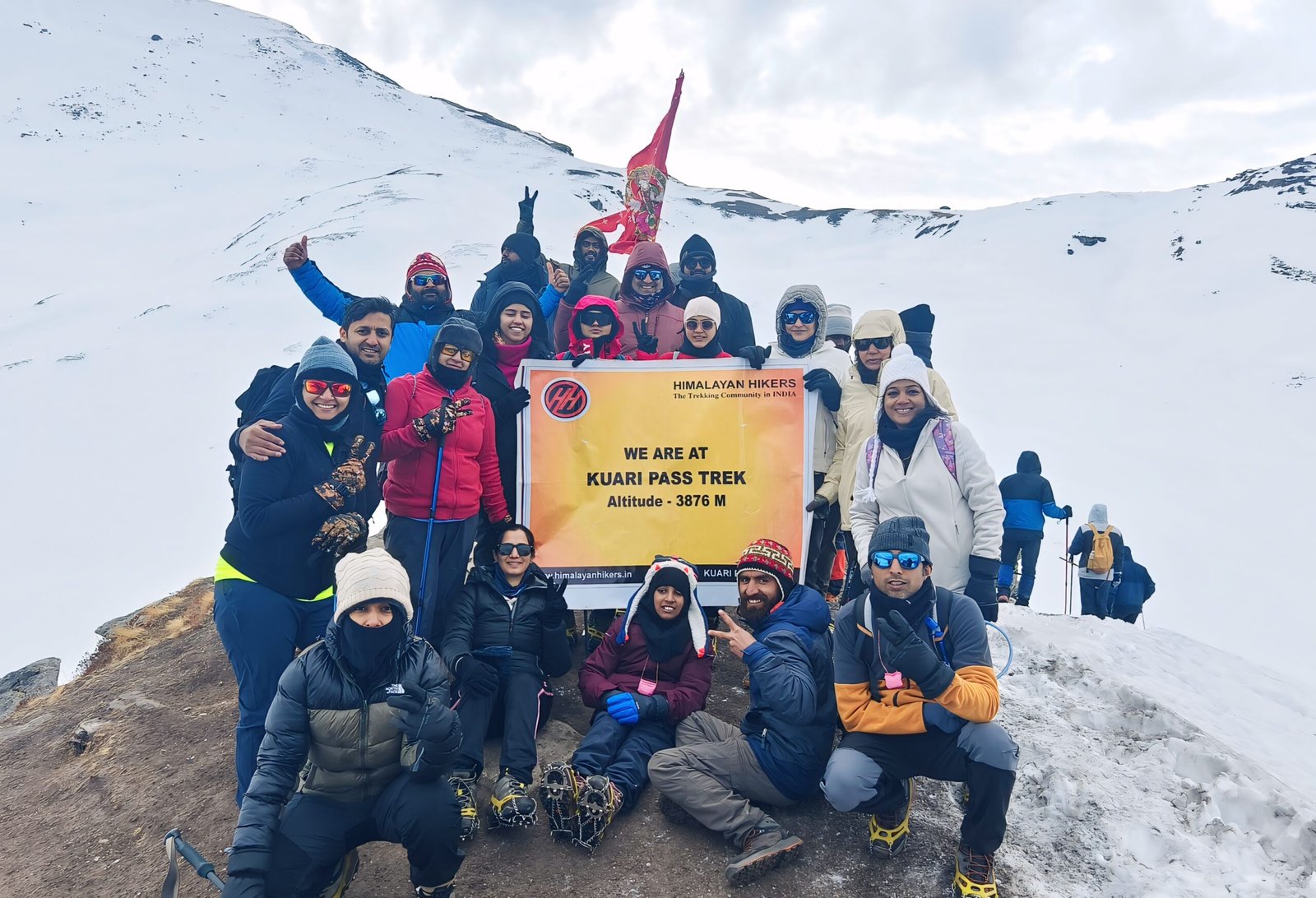
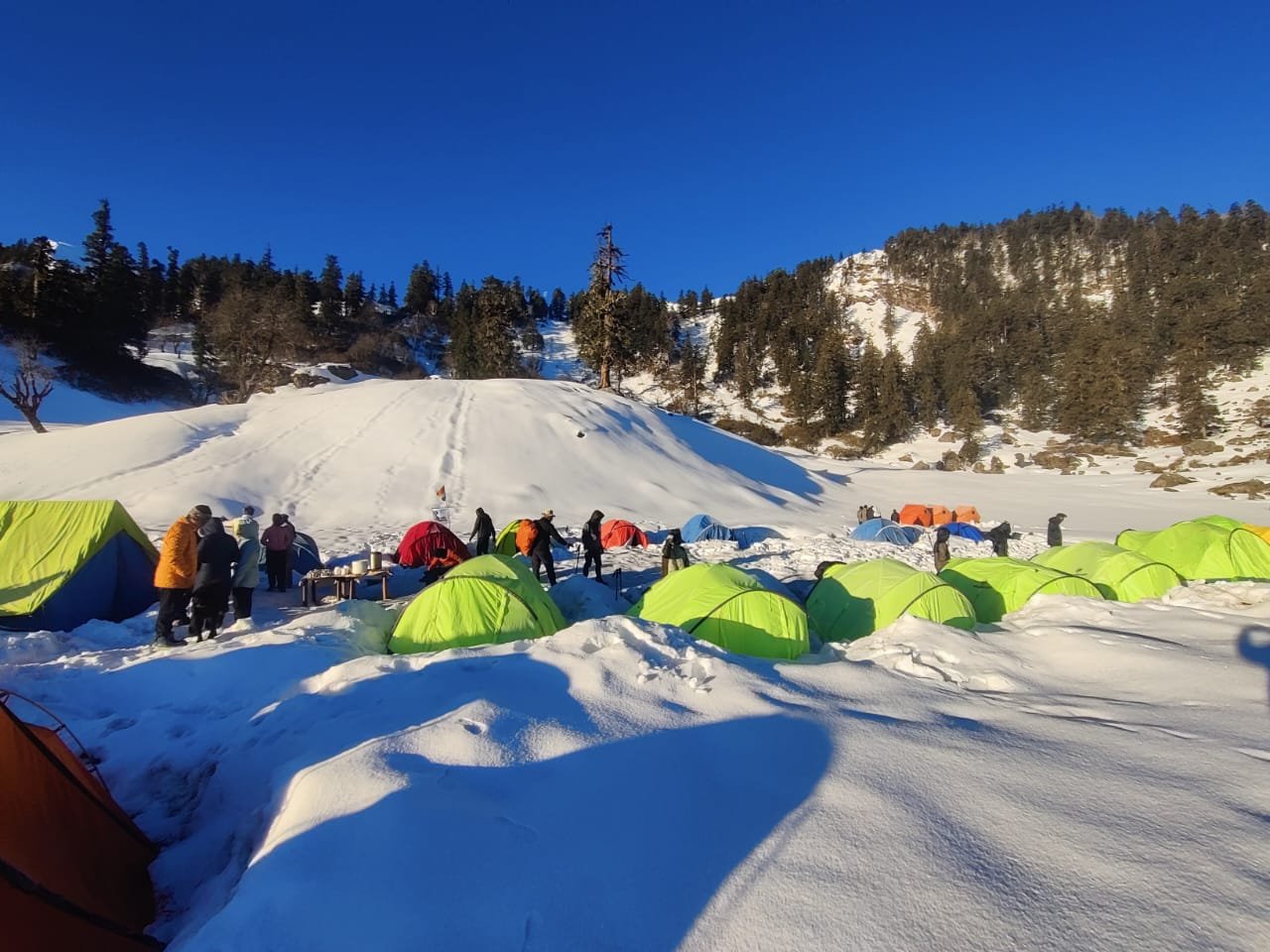
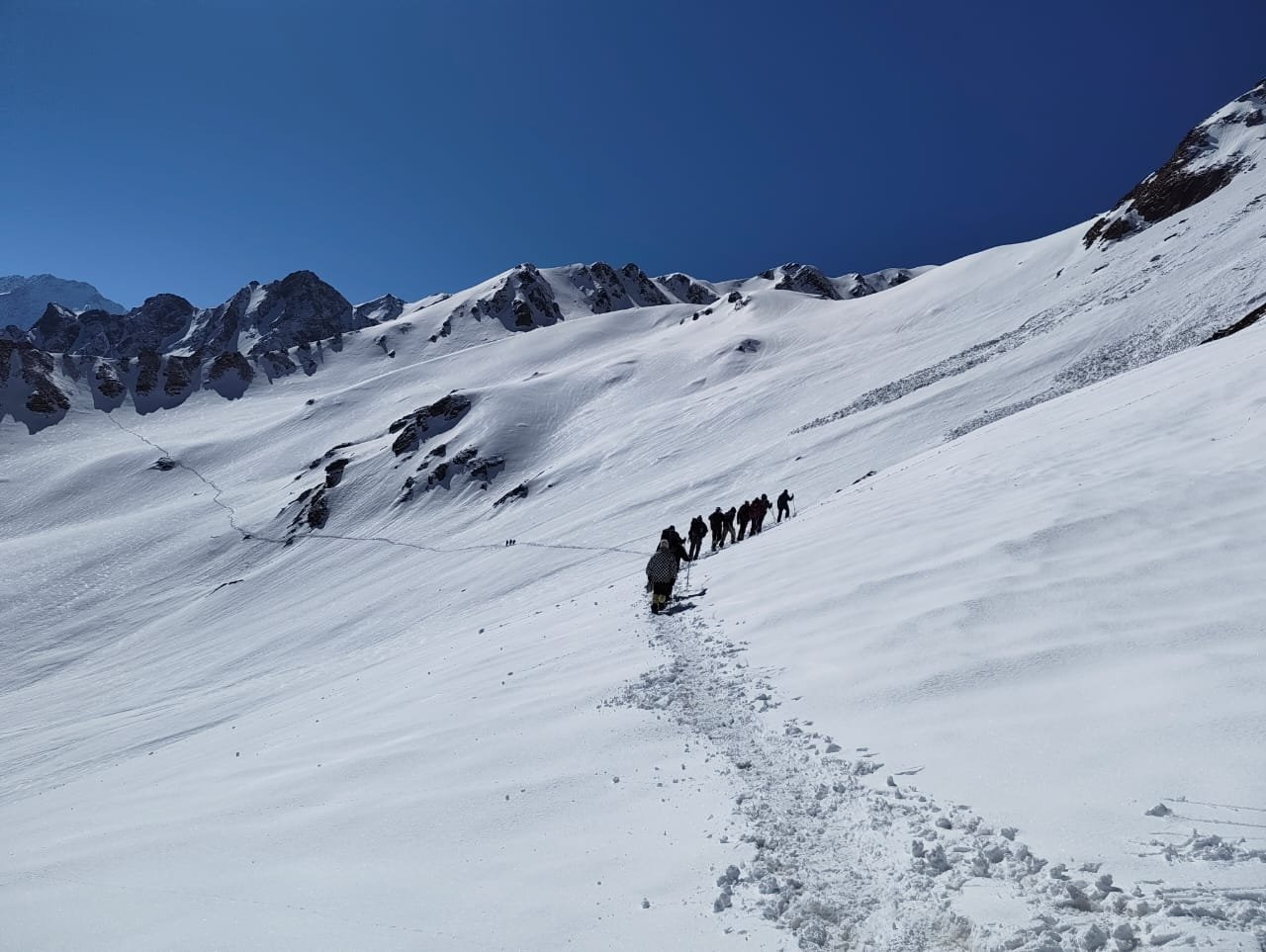



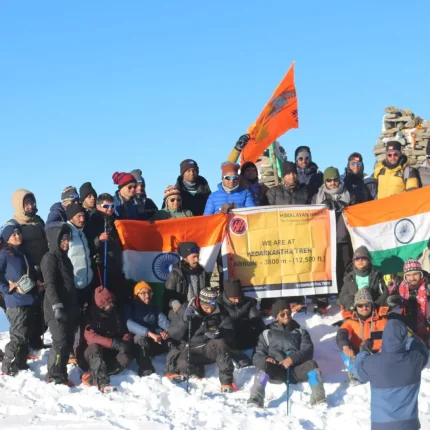
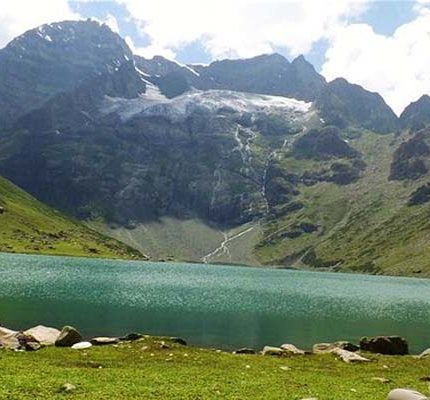
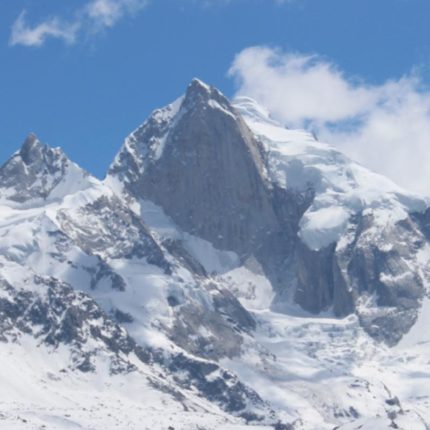

Nikhil Prithiani –
Overall the experience was great, the food, the stay and the trekking guides were genuinely great. Especially I would like to thank trek master Dhanesh and Raju chacha for being really helpful and making the whole experience enjoyable.
Yug Nair –
Amazing trek and amazing experience with a highly skilled staff of Dhanesh and Chacha who is the oldest active sherpa in India. Food was really above expectations with regards to the conditions and so were the tents and sleeping bag. Honestly I would 10/10 recommended it solely for the trek guides and the general vibes
Tanuj Pokarna –
Amazing experience with Dhanesh and Raju Chacha. It was my first trek and perfectly planned by HH. 10/10!
Zayn Badami –
10/10 by Dhanesh and Raju.
Amit Saha –
I have suceesfully completed the Kuari Pass winter trek in the month of February, 2025. It was a great experience of my life. The Himalayan Hikkers team for this trek were superb and very helpful. Thanks to them.